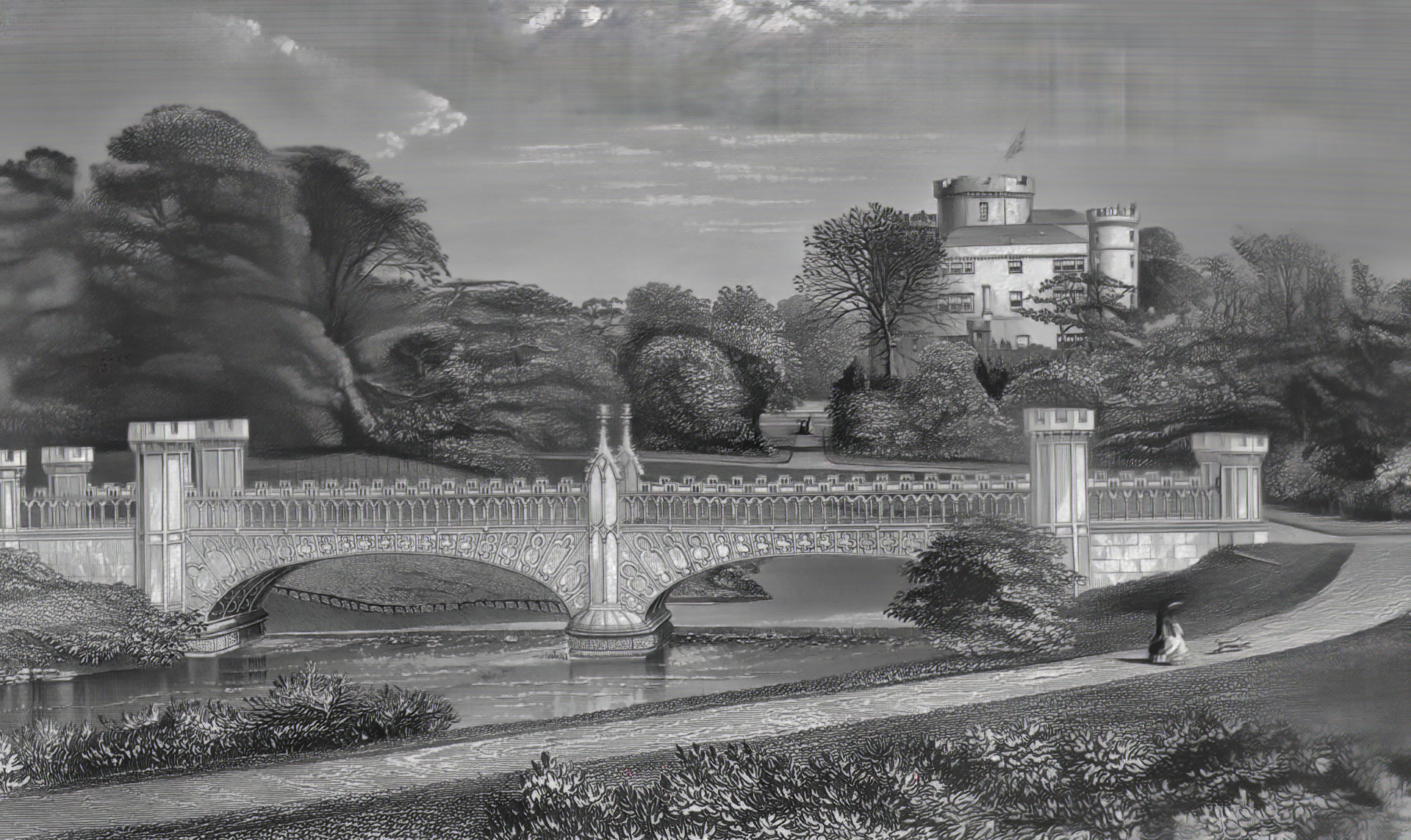Eglinton Castle was once the seat of the Earls of Eglinton, a powerful and influential family that played a significant role in Scottish politics and culture for centuries. In this blog post, we will take a closer look at the history and architecture of this fascinating castle, as well as some of the events and legends that surround it.
The History of Eglinton Castle
The first castle on the site was built by Sir Hugh de Eglinton in the 13th century. It was a wooden fortification that served as a stronghold against the invading English during the Wars of Scottish Independence. The castle was burnt by the Earl of Glencairn in 1528, during a feud between the rival Montgomery and Cunningham families.
The current castle was built between 1797 and 1802 by Archibald Montgomerie, 11th Earl of Eglinton. He commissioned John Paterson, a prominent architect, to design a Gothic castellated mansion that would reflect his taste and status. The new castle was dominated by a central 100-foot (30 m) large round keep and four 70-foot (21 m) outer towers. It was second only to Culzean Castle in appearance and grandeur.
The castle was lavishly furnished and decorated with paintings, sculptures, tapestries, and other artworks. It also contained many items of historical interest, such as a chair made from the oak timbers of Alloway kirk (the setting of Robert Burns’ poem Tam o’ Shanter) with a brass plaque bearing the whole poem. The castle also had extensive gardens, parklands, woodlands, lakes, bridges, and follies.
The most famous event that took place at Eglinton Castle was the Eglinton Tournament of 1839. This was an elaborate re-enactment of a medieval jousting tournament that was organized by Archibald Montgomerie, 13th Earl of Eglinton. He invited over 100 guests from across Britain and Europe to participate or spectate in this spectacle that lasted for three days. The tournament attracted thousands of visitors who came to witness the knights in shining armor competing for glory and honor.
However, the tournament was marred by bad weather that turned the grounds into mud and ruined many costumes and equipment. Despite this setback, the participants carried on with enthusiasm and displayed their skills and courage. The tournament was widely reported in newspapers and magazines, and inspired many artistic works, such as paintings, engravings, books, and poems. It also sparked a revival of interest in medieval culture and chivalry.
Eglinton Castle remained in possession of the Earls of Eglinton until 1925, when Hugh Montgomerie, 16th Earl of Eglinton, sold it to pay off debts. The castle was then used for training by the commandos during the Second World War, and later suffered damage from vandalism and fire. In 1973, the castle ruins were acquired by North Ayrshire Council, who converted the surrounding land into Eglinton Country Park. Today, the park is open to visitors who can enjoy various activities such as walking trails, cycling paths, fishing ponds, horse riding, golfing, camping, playgrounds, picnic areas, and wildlife watching. The park also has a visitor centre where you can learn more about the history and heritage of Eglinton Castle.
Today, visitors can explore the park’s beautiful grounds and see what remains of Eglinton Castle’s former glory. They can also visit the visitor centre which has displays about the history of the castle and its owners as well as information about wildlife and activities in the park.
Eglinton Castle is a fascinating place that reflects Scotland’s rich heritage and culture. It is well worth a visit for anyone interested in Gothic architecture or Scottish history.
The Architecture of Eglinton Castle
Eglinton Castle was designed in Gothic castellated style, which was popular among aristocrats who wanted to emulate medieval castles. Gothic castellated style is characterized by features such as battlements, turrets, towers, arches, pointed windows, vaulted ceilings, spiral staircases, and ornamental carvings.
The central keep was was the largest and tallest part of the castle. It had five stories with circular rooms connected by spiral stairs. It also had an octagonal roof with eight pinnacles. The keep housed the great hall, a library, a dining room, a drawing room, a billiard room, and numerous bedrooms.


